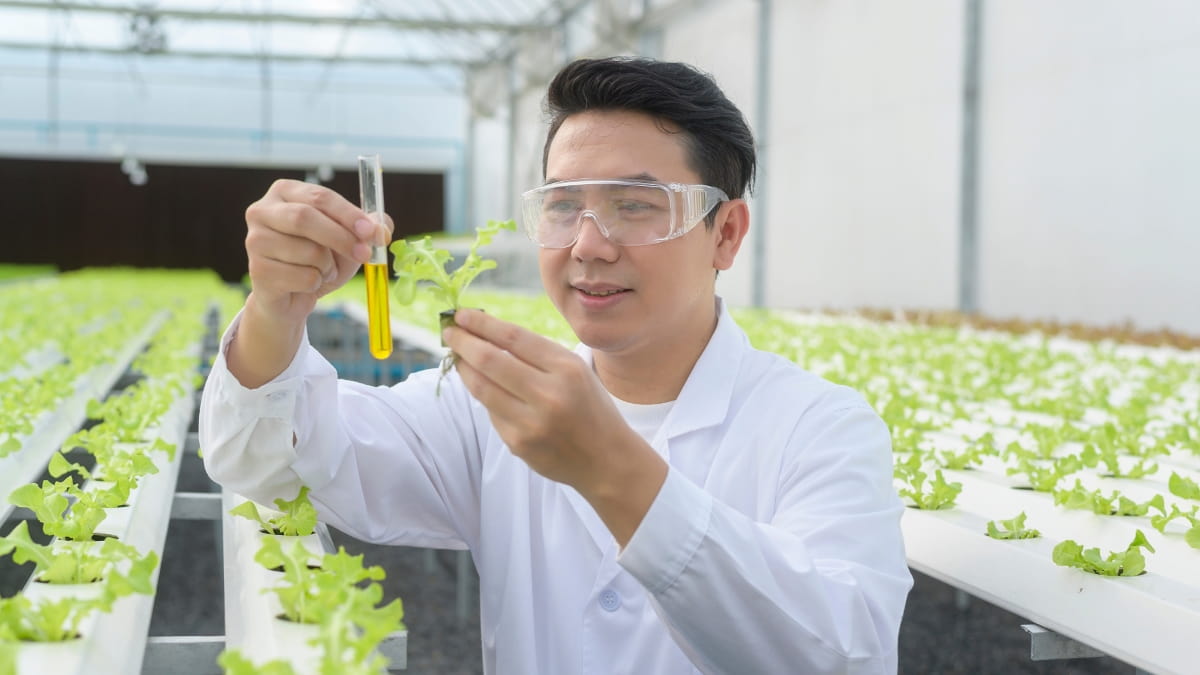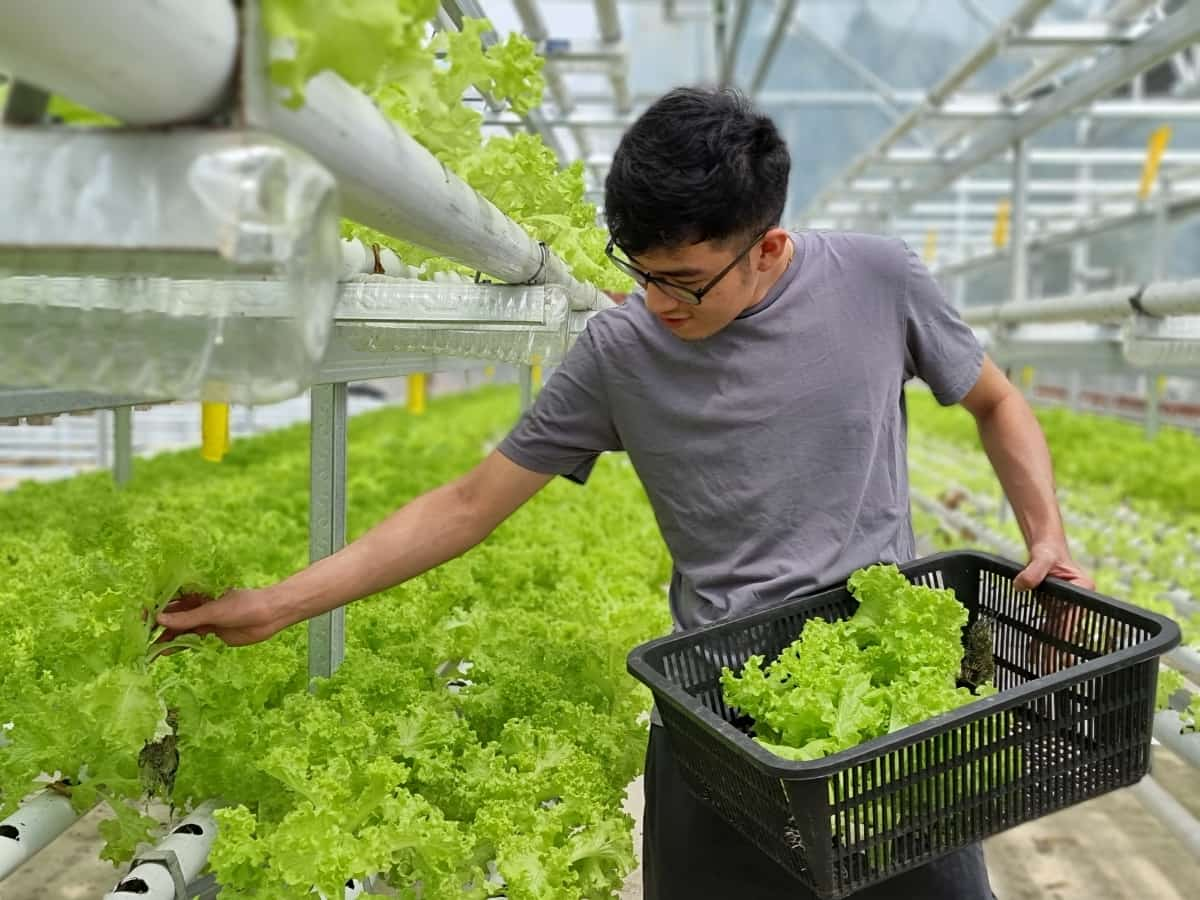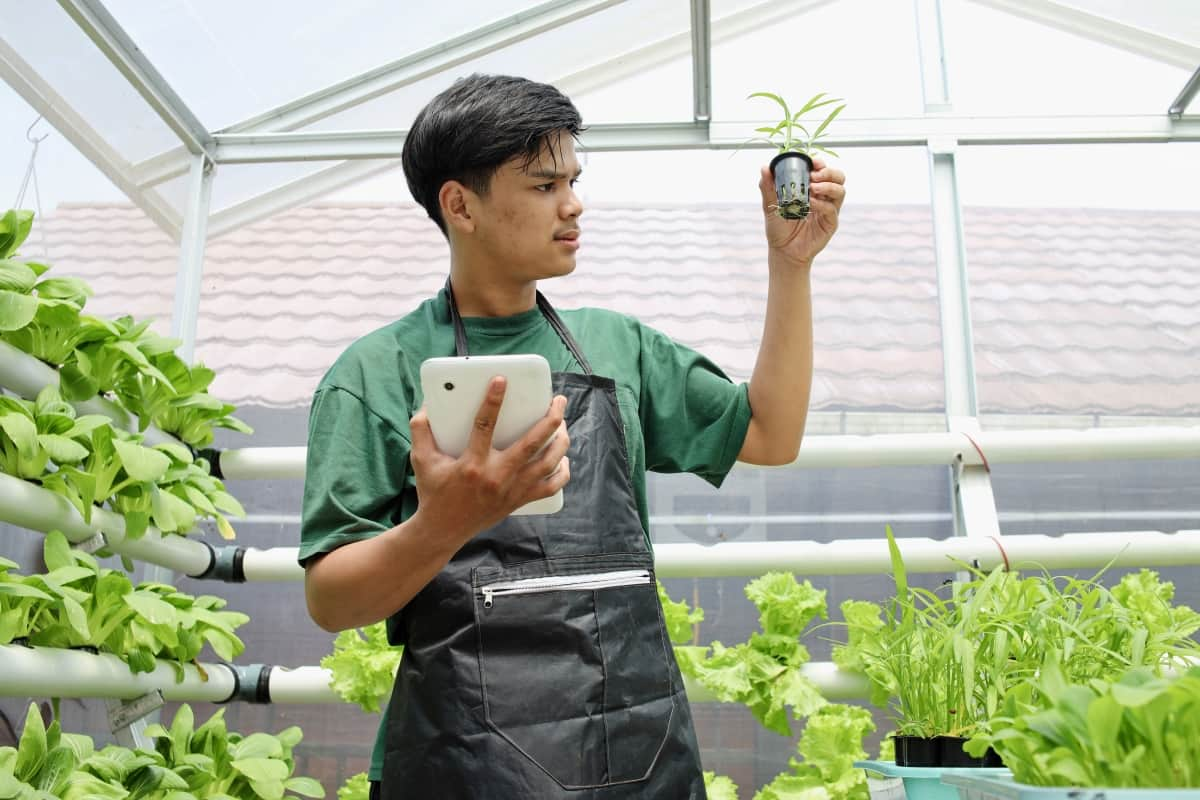Welcome to our comprehensive guide on hydroponic nutrient charts for vegetables. Whether you’re a seasoned hydroponic gardener or just starting, having the right nutrient balance is crucial for achieving bountiful harvests. This blog post’ll provide an easy-to-read chart summarizing the essential nutrients required for various vegetables throughout their growth stages. Following this nutrient chart, you can optimize your hydroponic system and ensure your plants receive the nutrients they need for healthy development.

Hydroponic Nutrient Chart for Vegetables
What is Hydroponic Nutrient Chart?
A hydroponic nutrient chart is a visual representation that outlines the specific nutrient requirements for various plants grown in a hydroponic system. It guides the ideal nutrient ratios needed at different growth stages, including macronutrients and micronutrients. The chart helps growers maintain the proper balance of nutrients to promote healthy plant development, maximize yields, and prevent nutrient deficiencies or toxicities.
Hydroponic Nutrient Chart for Tomatoes
Tomatoes are a popular choice for hydroponic gardening, and providing them with the right nutrients is essential for optimal growth and fruit production. A nutrient chart for tomatoes typically includes macronutrients like nitrogen (N), phosphorus (P), and potassium (K), as well as secondary nutrients like calcium (Ca) and magnesium (Mg). During the vegetative stage, a nutrient ratio of 3:1:2 (N:P: K) is often recommended, while a ratio of 1:2:4 is suitable for the flowering and fruiting stage.
Best Hydroponic Nutrients for Leafy Greens
Leafy greens, like lettuce, spinach, and kale, thrive in hydroponic systems with the best nutrient solutions. The ideal hydroponic nutrient mix for leafy greens should contain a balanced blend of essential elements. Nitrogen (N) is crucial for leafy growth, while phosphorus (P) aids root development.
Potassium (K) promotes overall plant health and disease resistance. Calcium (Ca) helps prevent leaf disorders, and magnesium (Mg) is necessary for chlorophyll production. Supplementing with micronutrients like iron (Fe), manganese (Mn), and zinc (Zn) ensures optimal leaf color and vitality.
Nutrient Requirements for Hydroponic Lettuce
Hydroponic lettuce cultivation requires careful attention to nutrient ratios to ensure optimal growth and development. The recommended nutrient solution for lettuce typically consists of nitrogen (N), phosphorus (P), and potassium (K) in a ratio of 3:1:3. Additionally, secondary macronutrients such as calcium (Ca) and magnesium (Mg) should be provided. Calcium is essential for cell wall structure, while magnesium aids in chlorophyll production. Micronutrients like iron (Fe), manganese (Mn), and zinc (Zn) are also necessary for proper lettuce nutrition.
In case you missed it: Hydroponic Fertilizer Schedule: Organic, Liquid, and Slow-Release

Hydroponic Nutrient Solution Ratios for Peppers
When it comes to hydroponic pepper cultivation, understanding the appropriate nutrient solution ratios is crucial for achieving optimal growth and yield. Peppers require a balanced nutrient solution that provides the necessary macronutrients and micronutrients. Generally, a nutrient solution with an electrical conductivity (EC) range of 1.5-2.5 mS/cm is recommended for peppers.
The ideal pH range for the nutrient solution is between 5.8 and 6.2. It is advisable to use a commercial hydroponic nutrient solution specifically formulated for vegetable crops or follow a customized dosage based on the plant’s growth stage to ensure the right nutrient ratios.
Hydroponic Nutrient Requirements for Cucumbers
Cucumbers are popular for hydroponic cultivation due to their high yield potential and fast growth. Achieving the right nutrient ratio is crucial for optimal development. A balanced nutrient solution with an N-P-K ratio of 3-1-2 is recommended for vegetative growth.
Adjusting the ratio to 1-2-3 promotes better fruit set and development during the flowering and fruiting stages. The ideal pH range for cucumber nutrient uptake is between 5.8 and 6.2. Maintaining appropriate macronutrients (nitrogen, phosphorus, and potassium) and micronutrients (calcium, magnesium, iron, etc.) is essential for healthy cucumber plants.
Hydroponic Nutrient Chart for Spinach and Kale
Spinach and kale are leafy green vegetables that thrive in hydroponic systems. Understanding their specific requirements is important to provide the best nutrient balance. The recommended nutrient chart for these greens suggests maintaining an EC (electrical conductivity) level of 1.6-2.4 mS/cm and a pH range of 5.5-6.5. The ideal nutrient solution should contain higher levels of nitrogen (N) and potassium (K) compared to phosphorus (P), with a ratio of approximately 3:1:2.
Balanced Nutrient Mix for Hydroponic Broccoli
Broccoli requires a precise combination of macronutrients and micronutrients to thrive. The recommended nutrient ratios for hydroponic broccoli typically include nitrogen (N), phosphorus (P), and potassium (K) in a ratio of 3:1:2. Additionally, broccoli benefits from secondary nutrients such as calcium (Ca), magnesium (Mg), and sulfur (S), as well as essential micronutrients like iron (Fe), manganese (Mn), zinc (Zn), copper (Cu), boron (B), and molybdenum (Mo). Maintaining optimal nutrient levels ensures robust growth, sturdy stalks, and nutrient-rich florets in hydroponic broccoli cultivation.
Hydroponic Nutrient Guidelines for Zucchini
Zucchini (Cucurbita pepo) is a popular vegetable to grow in hydroponic systems. To ensure optimal growth and yield, providing the right nutrients is important. The recommended nutrient ratios for hydroponic zucchini are as follows: nitrogen (N) at 150-200 ppm, phosphorus (P) at 50-80 ppm, potassium (K) at 150-200 ppm, calcium (Ca) at 150-200 ppm, magnesium (Mg) at 50-80 ppm, and micronutrients such as iron (Fe), manganese (Mn), zinc (Zn), copper (Cu), boron (B), and molybdenum (Mo) at appropriate levels. Maintaining a pH between 5.8 and 6.5 and an electrical conductivity (EC) level between 2.0 and 2.5 mS/cm is also crucial.
In case you missed it: How to Grow Asparagus Hydroponically: A Step-By-Step Guide

How to Create a Balanced Nutrient Solution for Hydroponics
- Measure the water: Start by measuring the water you’ll use for your hydroponic system. This will serve as the base for your nutrient solution.
- Determine the target pH: Different plants thrive at specific pH levels. Research the ideal pH range for your chosen vegetables and adjust using pH up or down solutions.
- Calculate nutrient ratios: Consult a reputable hydroponic nutrient chart to determine the appropriate ratios of macronutrients (nitrogen, phosphorus, potassium) and micronutrients (iron, calcium, magnesium, etc.) for your vegetables.
- Mix the nutrients: Following the recommended ratios, carefully measure and mix the required nutrients into your water. Start with the macronutrients and then add the micronutrients.
- Test and adjust: Use an EC (electrical conductivity) meter to measure the nutrient solution’s strength. Adjust the nutrient concentration by diluting it with water or adding more nutrients.
- Monitor and maintain: Regularly monitor your solution’s pH and nutrient strength. Make adjustments whenever necessary to ensure the levels remain within the optimal range for your plants.
Hydroponic Nutrient Deficiencies in Vegetables
Hydroponic nutrient deficiencies can significantly impact the growth and development of vegetables. These deficiencies occur when plants lack essential nutrients necessary for their metabolic processes. Common nutrient deficiencies in hydroponic vegetables include nitrogen, phosphorus, potassium, calcium, magnesium, iron, and micronutrients like zinc, manganese, and copper.
Nitrogen deficiency leads to stunted growth and yellowing of leaves, while phosphorus deficiency causes poor root development. Potassium deficiency results in weak stems and reduced fruit quality. Calcium and magnesium deficiencies can lead to blossom end rot in tomatoes and leaf discoloration. Iron deficiency manifests as yellowing between leaf veins.
Hydroponic Nutrient Chart for Ten Vegetable Crops
| Plant | PPM | EC | pH |
| Asparagus | 980-1260 | 1.4-1.8 | 6.0-6.8 |
| Artichokes | 560-1260 | 0.8-1.8 | 6.5-7.5 |
| Broccoli | 1960-2450 | 2.8-3.5 | 6.0-6.5 |
| Basil | 700-1120 | 1.0-1.6 | 5.5-6.5 |
| Lettuce | 560-840 | 0.8-1.2 | 5.5-6.5 |
| Parsley | 560-1260 | 0.8-1.8 | 5.5-6.0 |
| Spinach | 1260-1610 | 1.8-2.3 | 5.5-6.6 |
| Swiss chard | 1260-1610 | 1.8-2.3 | 6.0-6.5 |
| Thyme | 560-1120 | 0.8-1.6 | 5.5-7.0 |
| Watercress | 280-1260 | 0.4-1.8 | 6.5-6.8 |
Tips to Remember in Hydroponic Nutrients for Vegetables
- Hydroponic gardening requires the right balance of nutrients for optimal plant growth.
- Basic nutrients, including hydrogen, oxygen, carbon, and nitrogen, are essential for plant survival.
- Macro-nutrients like nitrogen, potassium, phosphorus, calcium, sulfur, and magnesium, and micro-nutrients such as iron, zinc, boron, and manganese are also vital.
- Hydroponic vegetables benefit from nutrients like nitrogen, phosphorous, potassium, calcium, sulfur, zinc, manganese, and iron.
- The provided hydroponic nutrient chart outlines recommended PPM, EC, and pH levels for various vegetables.
- Electrical conductivity (EC) measures nutrient concentration, while parts per million (PPM) indicates the total dissolved solids.
- Nutrient supply should vary based on reservoir size, plant growth stage, and the specific type of plant.
- Proper nutrient dosage is crucial, avoiding deficiency and excess to ensure plant health and a bountiful harvest.
In case you missed it: Mastering Hydroponic Components: A Comprehensive Guide to Building a Successful System

Conclusion
Understanding the hydroponic nutrient requirements for vegetables is key to successful cultivation. Following a well-balanced nutrient chart and considering factors like reservoir size and plant growth, the stage can optimize nutrient supply and achieve thriving, high-quality harvests.
- Feed Your Flock for Less: Top 10 Tips to Save on Chicken Feed
- Ultimate Guide to Ossabaw Island Hog: Breeding, Raising, Diet, and Care
- Hatching Answers: The Top 10 Reasons Your Chickens Aren’t Laying Eggs
- Eggs and Economics: Breaking Down the Cost of Raising Backyard Chickens
- Defend Your Greens: Proven Methods to Keep Iguanas Out of Your Garden
- Ultimate Guide to Cinnamon Queen Chicken: A Comprehensive Guide for Beginners
- Ultimate Guide to California Tan Chicken: Breeding, Raising, Diet, Egg-Production and Care
- Ultimate Guide to Marsh Daisy Chicken: Breeding, Raising, Diet, and Care
- 10 Types of Chicken Farming Businesses You Can Start for Profits